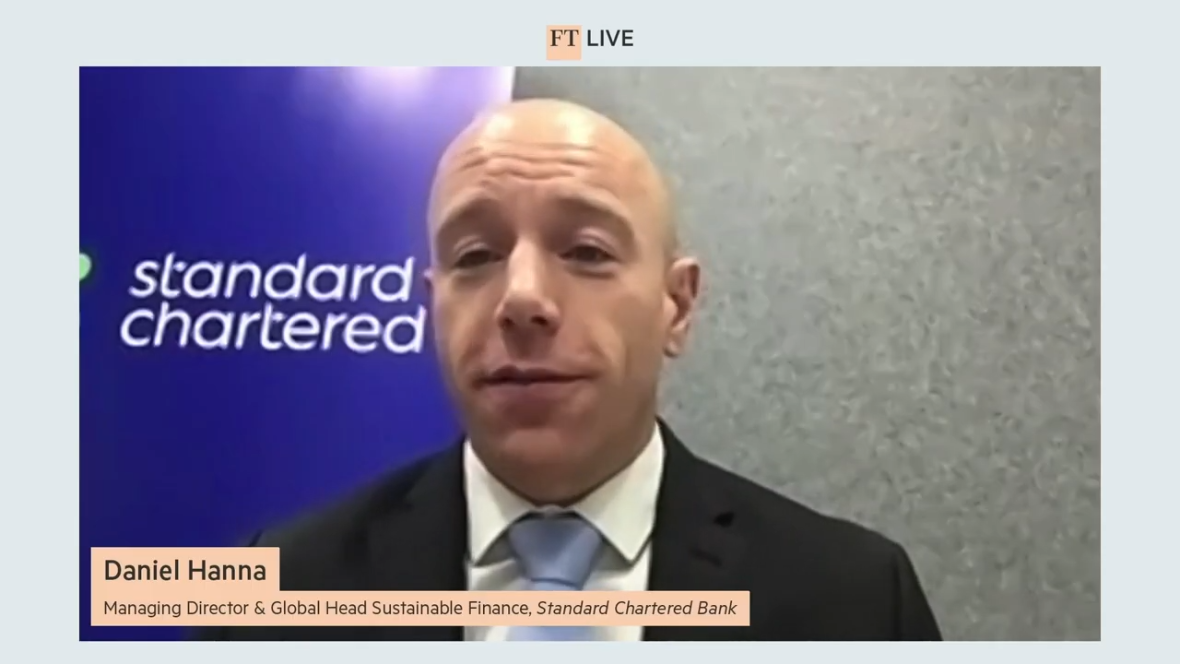Mining and the race to net zero


Mining is a carbon-intensive industry, but it’s one that we all rely on to supply the metals and minerals used to produce our cars, phones and numerous other products.
As with most other parts of the global economy, the drive towards sustainability is reshaping a mining sector that currently generates between 4 and 7 per cent of global greenhouse gas emissions1. When indirect – or Scope 3 – emissions from processing metals or combusting mined products like coal are taken into account, the figure jumps to 28 per cent – more than a quarter of all global emissions.
With such a sizable footprint, it is little wonder the industry is coming under increased pressure from governments, investors and society2 to focus on environmental, social and governance, or ESG, criteria.
“Mining, like finance, has the majority of emissions in Scope 3 and resolving this is absolutely the key challenge,” Daniel Hanna, Global Head of Sustainable Finance at Standard Chartered told the FT Mining Summit3.
After a sluggish start, mining is undergoing a mindset shift and is embracing efforts to reduce its direct and indirect emissions.
“The banking industry, finance industry and the mining industry are challenged by the planet’s climate emergency, and the growing focus that we’ve seen consumers, investors and regulators place on the importance of ESG,” said Daniel.
This raises important questions, including how do we create the electric-powered mine of the future that achieves net zero emissions? And what role can finance play in accelerating this?
Many mine owners are working to reduce direct emissions from their operations4 and from the electricity used to power mines, which are both within their direct control. The International Council on Mining and Metals (ICMM)5 has also committed to reach net zero for direct mining emissions by 2050 or sooner.
Efficiency gains from new crushing and separation techniques, or the use of carbon capture technologies to prevent carbon dioxide emissions reaching the atmosphere, are among the many solutions being developed.
By embracing technologies already proven in other industries, organisations in the mining industry can work together for a greener future.
As momentum increases to embrace a more sustainable world, the mining sector faces a dilemma: how to meet increasing demand for the metals and minerals needed to manufacture electric vehicles (EVs), scale up battery storage and transition to cleaner energy sources like wind and solar, while at the same time cutting emissions.
“Green growth is going to require a lot from the mining industry; copper, graphite, lithium, and a number of other critical metals are going to need to be part of this green revolution, with anything between 250 and 500 per cent growth,” Daniel predicted.
Greater collaboration provides an opportunity to resolve this challenge. Firstly, cooperation between mining companies to benchmark and share best practice sustainability solutions, but also between mining companies and other industry stakeholders. A holistic approach is essential to coordinate decarbonisation efforts.
Mining companies are increasingly working with original equipment manufacturers to accelerate the adoption of EVs to replace diesel-powered trucks, for example. Supported by an ICMM initiative6 to encourage adoption of cleaner, safer vehicles on mining sites, partnerships like these can help accelerate the pace of technical development and create more sustainable options for the entire mining industry.
Despite increasing awareness of the need for change, there is no one-size-fits-all solution to embracing sustainable practices. While the timeline for achieving net zero mining could be faster than expected, there is likely to be considerable variation between regions and even individual mining operators.
Legacy mining operations built to handle high-emission loads are likely to be less willing to embrace sustainable technologies – which offer fewer immediate benefits – than new mines.
The steel industry in China and other Asian markets has invested heavily in new blast furnaces that rely on fossil fuels, for example. As the lifecycle of these blast furnaces can last several decades, the likelihood of switching to cleaner electric blast furnaces anytime soon is slim. Operational decisions like this are beyond the control of mine owners, but act as a barrier to reducing the mining industry’s Scope 3 emissions.
Here, the finance sector has an important role to play as a driver of change. Banks like Standard Chartered work with mining clients around the world, and those further along the supply chain that utilise extraction products, to agree sustainability targets and put the mechanisms for change in place.
Alongside moves to direct investment capital to more sustainable projects, there is a need to establish a unified framework for measuring, comparing and mitigating emissions across different regions. This could help standardise global emissions reporting and create a credible carbon market, including the use of offset schemes to decarbonise hard-to-electrify sectors.
While carbon dioxide offset schemes are no substitute for reducing emissions, they can provide much-needed funding to accelerate new technological developments.
“We all need to decarbonise as quickly, as fast and as thoroughly as possible. But when we can’t decarbonise any further, using offsets to compensate for some emissions can play a role,” explained Daniel.
The challenge ahead will require a lot of input and some tough decisions. But as momentum for change builds, the growing commitment and collaboration between mining companies, policymakers and the financial sector will help move the industry towards net zero emissions.
1 McKinsey: Climate risk and decarbonization: What every mining CEO needs to know
2 SP Global: Path to Net Zero: Miners are Starting to Decarbonize as Investor Pressure Mounts
3 FT Mining Summit
4 S&P Global: Path to Net Zero
5 ICMM: Our Commitment to a Goal of Net Zero by 2050 or Sooner
6 ICMM: Innovation for Cleaner, Safer Vehicles Initiative

With topics around urban transformation, energy transition, the future of transport and critical infrastructure across Asia, Africa and the Middle East, this content series will unearth fresh trends and showcase how we are supporting clients in the transition towards a more sustainable and inclusive future.